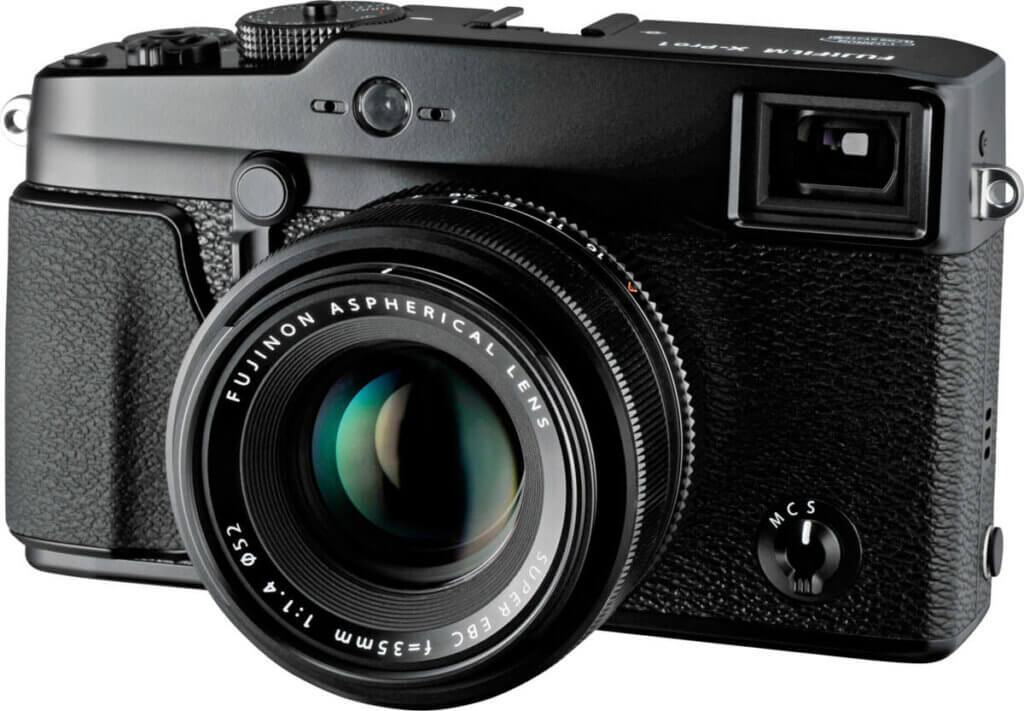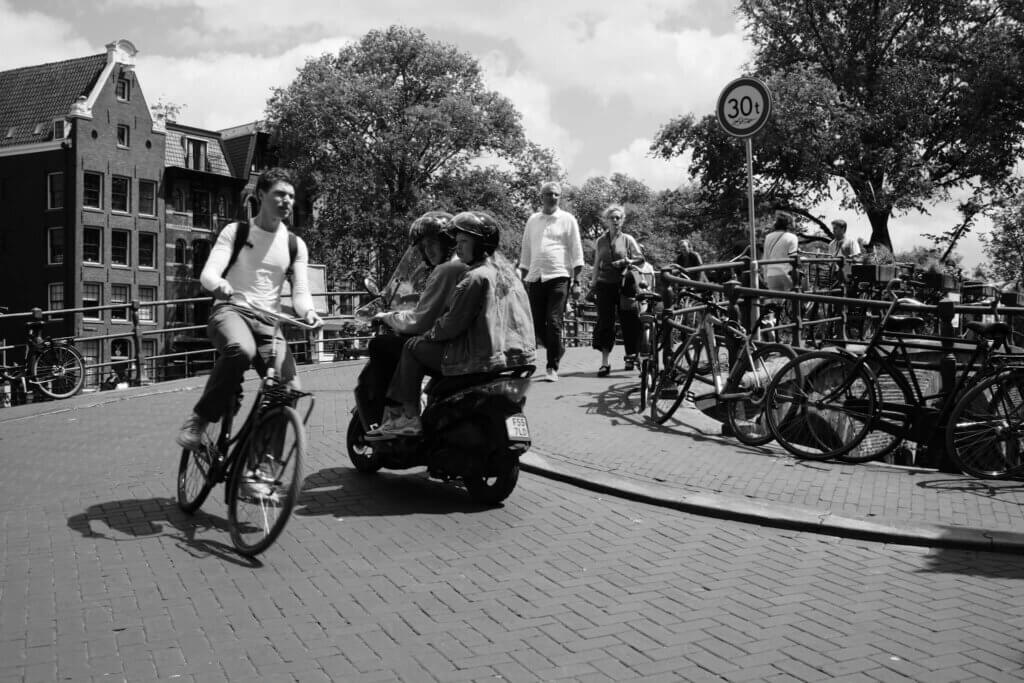Last week I already announced that I traded my Fuji X-E2 for a Fuji X-Pro1 and why I did that. In this Fuji X-Pro1 review I will share my first experiences with this camera, more than 10 years after the release to market.
The Fuji X-Pro1 review will not be too technical, but more my subjective opinion of the camera.
Design
Let’s start with the design of this camera. Being a Leica / rangefinder fan, you have to love the design of this camera. It is not particularly small (not too big either) and has a rangefinder design with an optical viewfinder (more on this below). It has a good grip and it is a camera that want to pick up make pictures with.

There are obviously more button than on my Leica M10 and as such it is a more complex operation. However, once you have set it up, there is little reason to touch any other buttons than ISO, shutter speed and aperture.
Viewfinder
The X-Pro1 sports both an electronic viewfinder (EVF) as well and optical viewfinder (OVF). The behaviour of these is quite different depending on whether you are using an autofocus lens or a manual focus lens. I have both types of lenses as will discuss behaviour below.
Focusing with an AutoFocus lens
I used an XF35mm f/2 lens on my X-Pro1, which I bought in Japan a few years ago. If you have the opportunity, I can highly recommend purchasing gear in Japan as you will be able for reduce the price by not paying the VAT in Japan. Just bring your passport to the shop to prove that you are not Japanese and will get a refund for the VAT!
When you use an autofocus lens, the behaviour of the EVF is what you are used to on a Fuji camera. You can set the focus point where you want it to be and half press the shutter to focus. Not surprise here.
When you are using the OVF, you’ll get a frameline that matches the lens that you are using so you can frame the shot. If your subject is relatively close to the camera, the frameline will move to correct for the parallax effect that is common to rangefinder style cameras (as you are not looking through the lens).
At the bottom of the OVF a distance indicator is presented that shows the distance of you subject to the camera when focusing.
Autofocus is not fast, but as I come from an X-E2, the performance is more or less the same. And I normally shoot Leica M with manual focus, which makes that I have a totally different reference point.
Focusing with a manual lens
When you are using the EVF with a manual focus lens, there are two ways to focus. One way is to focus is with a digital split image, which you may know from using an SLR. Basically part of the image in the EVF is split in two and you have to line up the halves. When lined up your image is in focus.
Digital split image
I have always found the digital split image on Fuji hard to use. The distinction is not very clear to me and find it hard to focus.
Focus peaking
Alternatively, you can use a feature called focus peaking to focus. This means that when a subject is in focus, the edges of the subject are highlighted. In newer Fuji cameras (X-E2 and onwards) you can choose the color of the highlights: blue or red. However, on the X-Pro1, there is only one color and that is white. This makes focus peaking harder to use under bright circumstances. I found it usable though.
When you use the OVF with a manual focus lens, you cannot focus! The distance scale does not have any indication due the lack of electronic controls in the lens and there is not focus peaking or digital split image in the OVF.
Seriously, you cannot focus a manual lens with the OVF? The OVF is one of the attractions of the camera for me, so if this were to be true, I’d be very disappointed. Fortunately, there is a solution. When you want to focus, you press the command wheel on the back of the camera. This switches to a magnified EVF, where you can use focus peaking. Once you have focused, you half press the shutter and you are back in the OVF. Recompose and shoot. For me, this is a very acceptable way of focusing while using the OVF.
Image quality
The X-Pro1 has a 16MP sensor which is not a lot by todays standards, but enough for small print and publication on internet and social media. Moreover the first generation XTrans sensor does not have an anti-aliasing filter, which means that the image appear sharper. I will describe my experience with black & white as well as with color images.
Black and white
No doubt you are aware of the fact that Fujifilm cameras support so-called recipes for film simulations. There is a thriving community that exchanges recipes for all kinds of film simulations. Perhaps one of the most well-known is Fuji X Weekly, where you can find recipes for all generations of Trans sensors. This time, however, I used a recipe by Jorge Perez. The recipe I used was the Dark Knight recipe, which brings an Acros-like simulation to the X-Pro1.

In my opinion the rendering of the black & white as well as the sharpness of the image is really appealing. The image was taken with a TTArtisan 25mm f/2 manual focus lens, by the way.
Color
When I shot color with the X-Pro1, I did not use any recipes, so the colours are exactly the way they the sensor renders them. I did this because the first generation Trans sensors have a reputation of having film-like colours. Only three cameras have a first generation XTrans sensor: the original X-100, X-E1 and the X-Pro1.


Judge for yourself, but I like the colours rendered by the X-Pro1. I took the images with an XF35mm f/2 autofocus lens.
Conclusion
Conclusion of this Fuji X-Pro1 review is that this is certainly by today’s standards not a perfect camera. Specifically when you use a manual focus lens, there is a small learning curve in the focusing department. This design and handling of the camera as well as the images rendered by it compensate the downsides more than enough though.
Leave a Reply